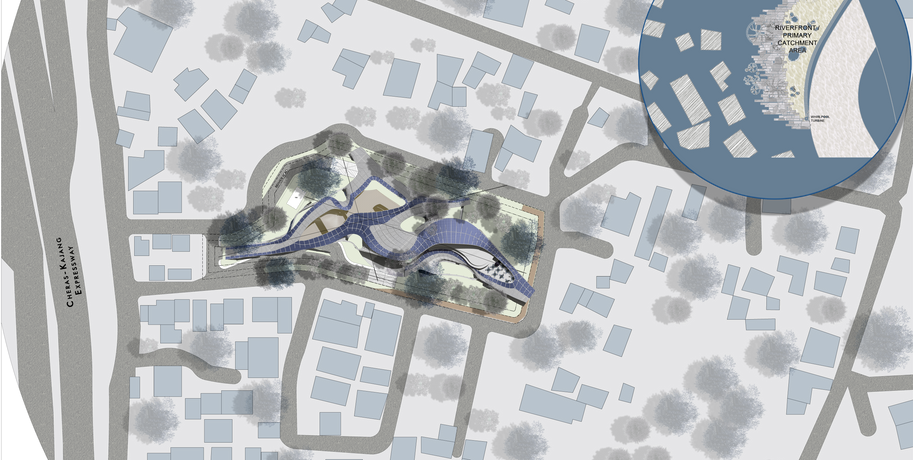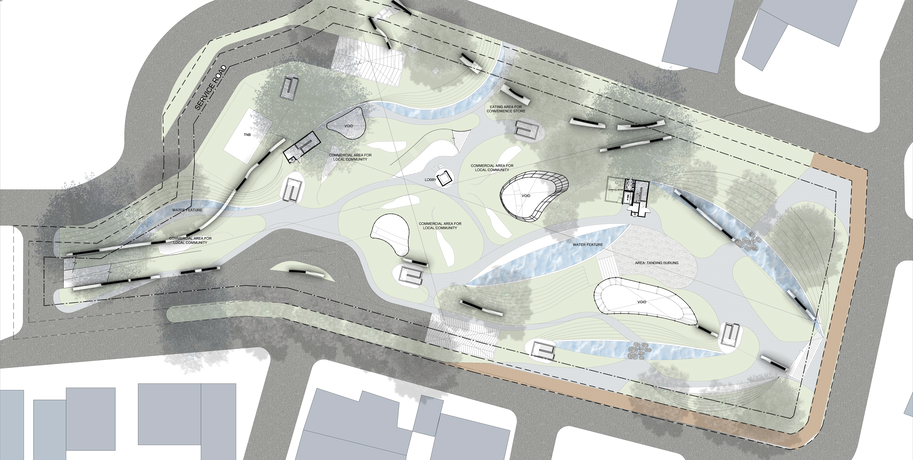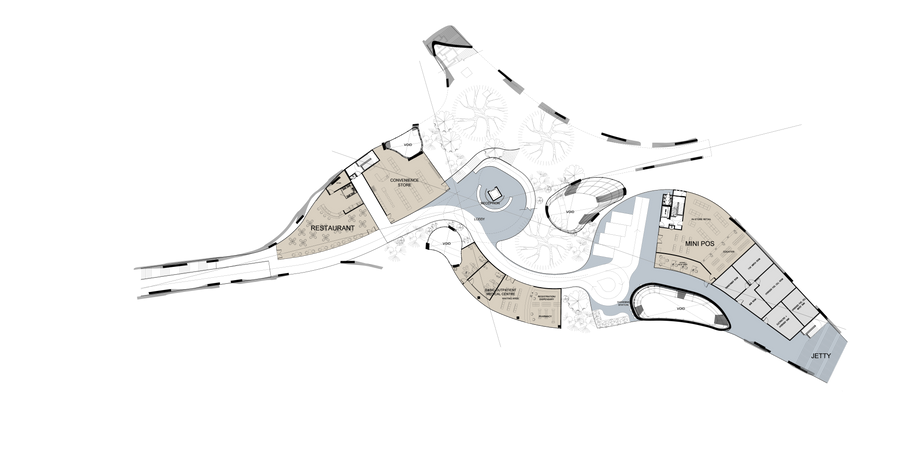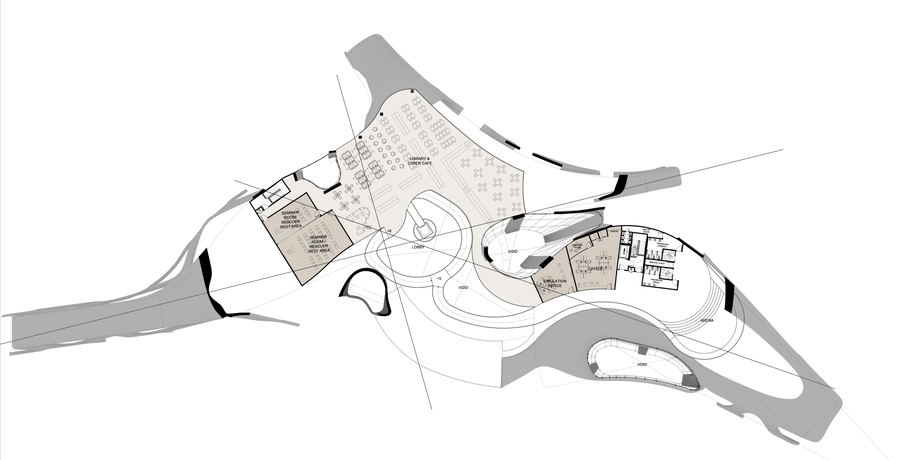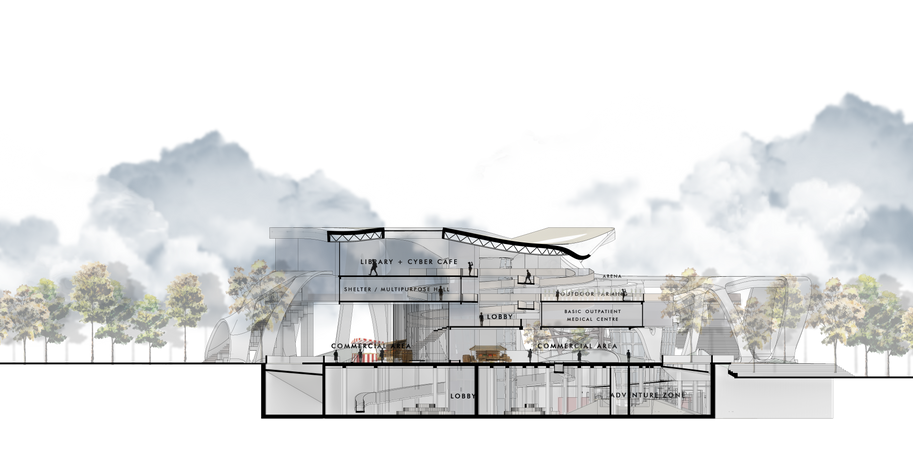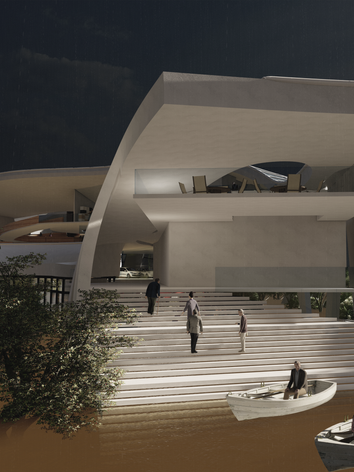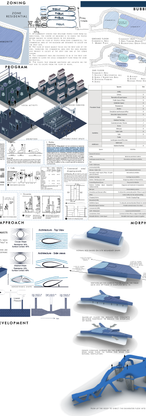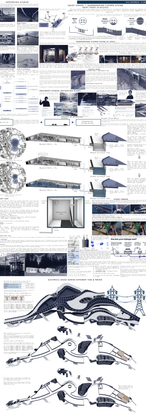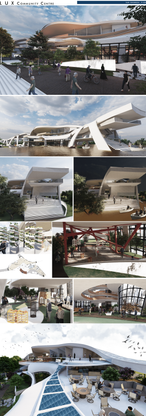top of page
F L U X
COMMUNITY CENTER
Instead of trying to reverse or counter back the nature hydrological disaster, why not we adapt, recycle and make full use of these features and integrate in the building design to make a better building design.
Climate Change Causes Worse Natural Disaster
Transforming The Negativity Into Life!
Based on the data and research, hydrological hazards are the most severe natural disaster in Malaysia. Hydrological hazard is a violent, sudden and destructive change either in the quality of Earth's water or in the distribution or movement of water on land below the surface or in the atmosphere.

Design Aim
To introduce program to enlighten the underdeveloped village while produce building design that can adapt and resilient to hydrological risks.

Programme
During flood season, the percentage of programmes for community and commercial will change accordingly based on the function of spaces.

Project Site
Based on the criterias for site selection, Kampung Batu 10, Cheras is chosen. The macro criterias included are low lying area, lighting stroke density and flood prone area.



With the site analysis that had been done throughout the project, the zoning for the building is determined based on the zoning in Kampung Batu 10, Cheras to tackle the human flow from different direction.
Besides, in order to tackle one of the hydrological risk, which is thunderstorm, the flow of the wind is studied based on the strength to optimized for natural ventilation.







Transforming the three main hazardous features in hydrological risk into new opportunities is the main concept of flux community centre.


Drawings

Flood Mitigation Approach
Application of same concept of SMART tunnel, which is dual purpose one structure. To propose a space for youngsters in Kampung Batu 10 Cheras to have some recreational activity. In addition, to reduce the flood damage to the Kampung Batu 10 Cheras, and to provide a longer time for the villagers to get prepared and fled from the most likely affected area, by channeling the floodwater into the reservoir tank. Besides, with the floodwater stored in the underground cistern system, the water stored can be reused by the building itself and also channel to be used by the local community. Even the nearby mosque for ablution purpose. However, since the floodwater is muddy and dirty, filter system must be provided before the flood water can be reused.


Electrical Usage During Different Time & Period
During Day Time, the building rely on solar panels and grid system to accomodate the building energy load. During night Time, the building rely on hydrogen fuel cell to generate electricity. When flood happens, the building rely on hydrogen fuel cell. (TNB cut off for safety purpose, solar panels may not be working due to rainy days) With hydrogen fuel cell, this building can continue to operate even during flood season. There is no more darkness during flood.

Wind Catcher Integrate with Rainwater Harvesting System
The wind catcher work with the solar thermal tube to create a more significant temperature gradient and induce natural ventilation in the building. Besides, the wind catcher act as the funnel for rainwater harvesting. Rainwater harvesting reduces soil erosion and flood hazards by reducing the flow of stormwater to prevent urban flooding. In addition, RWH is one of the simplest and oldest methods of self supply of water.

Perspectives
Presentation Boards
bottom of page
